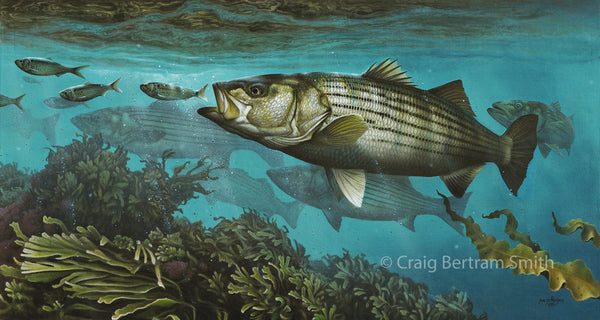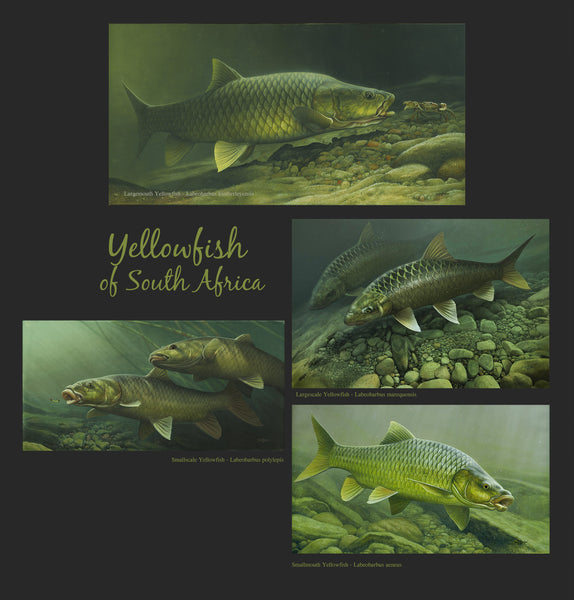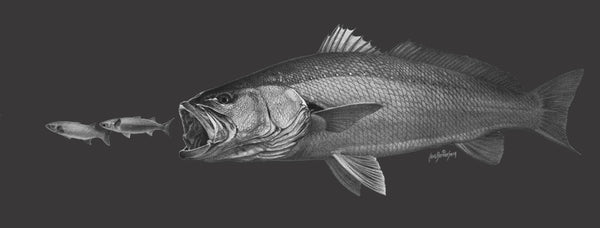
In the Zone
SOLD (91cm x 61cm (36" x 24") Oil on canvas)
© Craig Bertram Smith
Please contact craig@wildlifeartist.co.za for enquiries or if you would like to get a commission painted.
One of my more successful paintings early on in my carreer as an artist - “In the Zone” was the result of many weeks researching, sketching and studying. Garrick or Leervis as they call it in South Africa are extremely popular amongst many sport rock and surf fisherman but they have seldomly been photographed underwater, despite the many dead pictures of ecstatic anglers with their fish. A dead fish to me is pointless. It is the life of the fish, the spirit of the fish that I need to capture. You can see it in their eyes, their intent their hunger their nature. Many of my friends who have had more encounters with this spectacular creature were involved in this painting e. I am indebted to Bruce Truter – Editor of The Hunting and Fishing Journal who gave solid direction and inspiration. He has caught many Garrick in his day and if anyone knows what makes this fish tick, he does.
Garrick often hunt in packs like wolves and as shown in the painting this particular group of Garrick are churning up the surface water in pursuit of a shoal of striped Mullet. One of the Garrick is distracted by a popper being jerked and retrieved erratically along the surface. The scene is at a climax – Will it take the lure or will it refuse?
I have enjoyed bringing this painting to life, I put careful attention into the detail of the surface being churned up by scurrying bate fish followed by hungry Garrick. Also the use of light was very important for this piece as underwater light which is constantly refracted and filtered through the water creates a magical light display – note the light patterns on the surface of the main Garrick in the picture.
There are two distinctive muscle groups: The outer core of muscle is used for great bursts of speed for shorter distances probably when pouncing for bait fish, and the inner muscle core (a darker coloured muscle) for long distance endurance swimming, during it’s continual migrations in search of fresh feeding or breeding grounds. More incredible though is that the central muscle core is kept at a higher temperature, generating it’s own body heat, making it partially “warm blooded”




